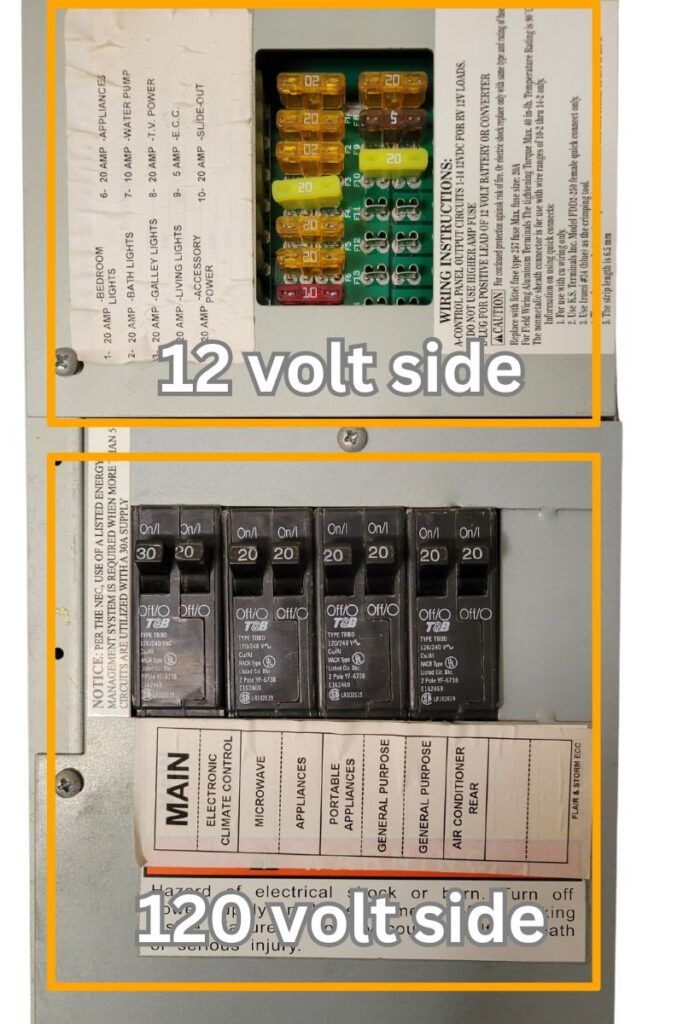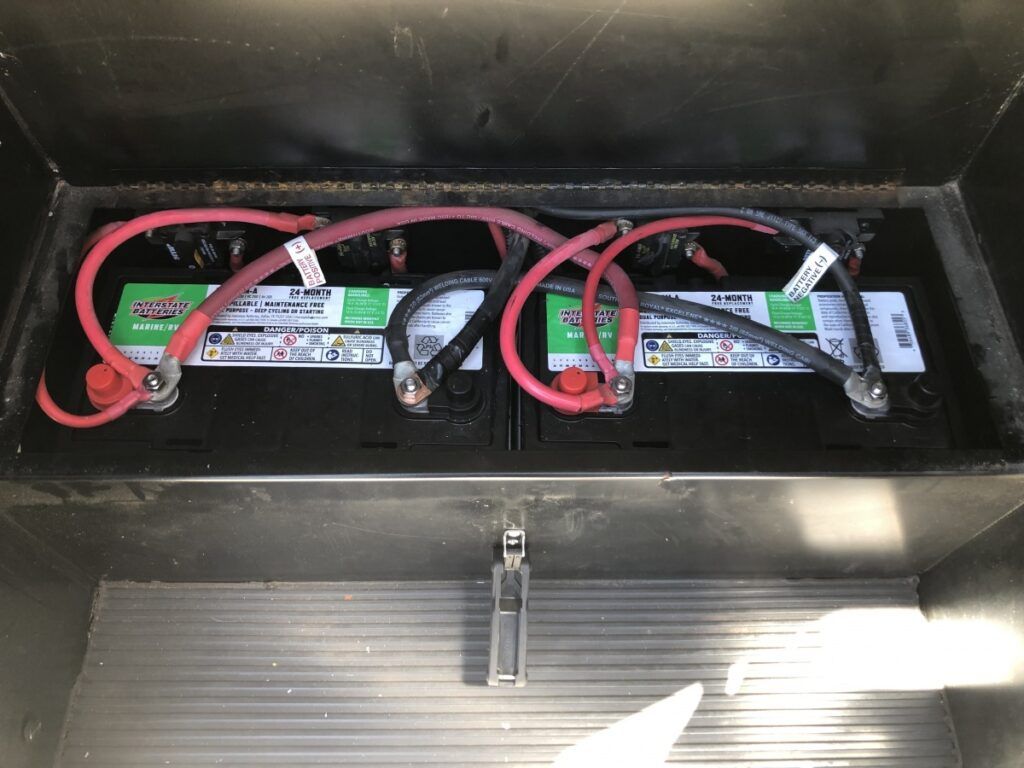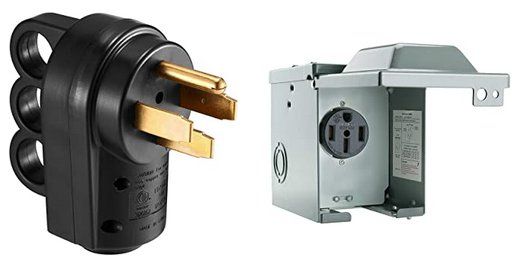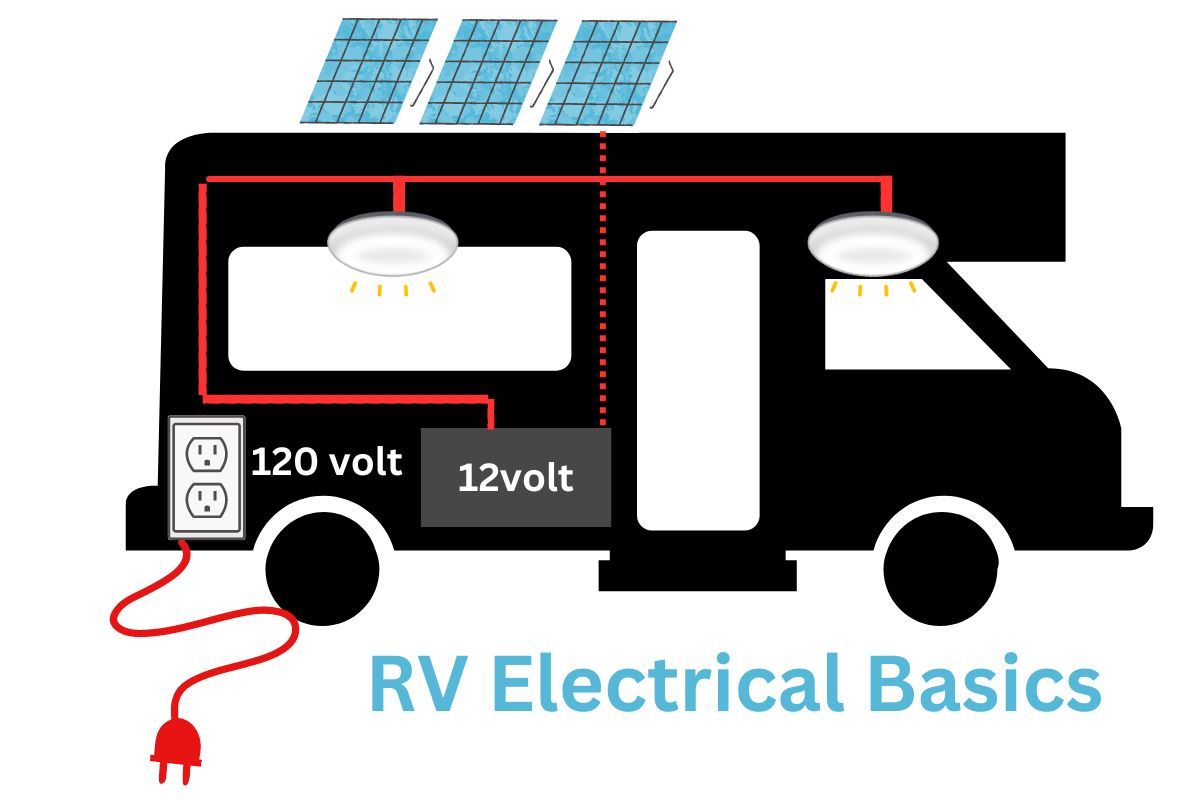RV Electrical System: A Tale of Two Voltages
Your RV electrical system is pretty simple. With a little help you should have no problem figuring it out and being able to troubleshoot it when the time comes.
An RV electrical system is usually made up of two different systems with two different voltages. You may find the odd rig that is different, but for the most part, you will find a 110-120 volt AC system and a 12 volt DC system.

For less confusion, when talking about the AC side of your RV electrical system we will use 120 volts moving forward because that has been “the norm” for almost 50 years. 120 volts is somewhat of the adopted standard these days and the voltage will vary as much as 10%, depending on the condition of the electrical system at the campground where you are staying.
More on that in other blog posts!
For the sake of this basic discussion of your RV electrical system we will lump together 30 amp and 50 amp service. They work the same overall and we will address the differences in a future blog post.
The 120 Volt Side of Your RV Electrical System
Purpose: The 120-volt system in an RV is used for powering appliances and devices that require more energy. This includes things like the air conditioner, microwave, television, and wall outlets for plugging in other high-power devices.
Power Source: This system typically gets its power from external sources such as shore power (when plugged into an RV park’s electrical pedestal) or from a generator. When you’re plugged into shore power, the 120-volt system provides the same type of electricity that you find in a standard home.
Operation: The power coming in is alternating current (AC), which is what most household appliances use. When connected to shore power, the electricity flows through the RV’s power cord into the RV’s electrical panel, distributing power to the various 120-volt circuits.
The 12 Volt Side of Your RV Electrical System
Purpose: The 12-volt system powers most of the RV’s essential functions and low-power devices. This includes the interior lights, water pump, vent fans, the control circuits for appliances, and sometimes the refrigerator.
Power Source: This system is primarily powered by the RV’s batteries. These batteries are typically charged by the RV’s converter when plugged into shore power, by a generator, or by solar panels if the RV is equipped with them.
Operation: The 12-volt system uses direct current (DC), which is different from the alternating current used by the 120-volt system. This DC power is distributed through a fuse panel, which ensures that each device gets the appropriate amount of power without overloading the system.
Key Differences in the 2 Sides of Your RV Electrical System
- Voltage Type: The 120-volt system uses AC (alternating current) power, while the 12-volt system uses DC (direct current) power.
- Applications: The 120-volt system is used for high-power appliances, while the 12-volt system is for low-power essentials.
- Power Sources: The 120-volt system requires an external power source like shore power or a generator, whereas the 12-volt system relies on the RV’s battery bank.
- Distribution: In the 120-volt system, power is distributed through breakers in the electrical panel. In the 12-volt system, power is distributed through fuses in the fuse panel.
Why Does My RV Electrical System Have 2 Systems?

Having both systems allows an RV to be versatile and functional both when connected to an external power source and when off-grid.
When you are parked out on a beautiful lake, the 12-volt system ensures that the RV can still operate its essential functions even when shore power is not available.

The 120-volt system provides the power needed for more demanding appliances when you have AC power available to you. That can come from shore power, a generator, or an inverter that gets it’s power from your battery bank. We talk about RV inverters in another blog post.
Understanding these two systems is crucial for maintaining your RV and ensuring a smooth and enjoyable travel experience.
We will talk about troubleshooting both of these systems in a future blog post, but this should get you started.
Have a great day and safe travels!
What is the difference between a 30 amp RV plug vs 50 amp RV plug?
The difference between a 30 amp RV plug vs 50 amp RV plug is the amount of power your RV requires to power all of it’s 120 volt appliances. In general, the smaller or older RVs use 30 AMP outputs, while larger and newer RVs use 50 AMP outputs. You can immediately tell the difference between 30 and 50 AMP hookups because a 30 AMP plug only has three prongs and a 50 AMP plug has four prongs.
What kind of wiring does an RV have?
You RV has both 120 volt AC wiring, similar to what is used in your house and 12 volt DC wiring, similar to what is used in your vehicles.
Can I run my RV air conditioner on battery power?
The short answer is yes, but it will be VERY EXPENSIVE and a bit more complicated than that. Your RV air conditioner is a 120 volt appliance so you will need an RV inverter hooked to your battery bank and enough battery storage to power it all. We will address the expensive in other blog posts.
Can I plug my RV into my house electricity?

Yes you can because they are both 120 volt, but you will need an adaptor for either a 30 amp or 50 amp RV plug. You will NOT be able to run all of your appliance because a single house plug will likely be 15-20 amps tops.
How can I power my RV without hookups?
There are several ways to power your RV without hookups.
1. Run a generator for 120 volts
2. Have solar power charge your batteries and run an inverter for 120 volts
3. Have a wind turbine charge your batteries and run an inverter for 120 volts
4. All your 12 volt appliances can run off a battery bank
Will RV lights work without a battery?
Yes, but you will need an alternative 12 volt source like a converter.


